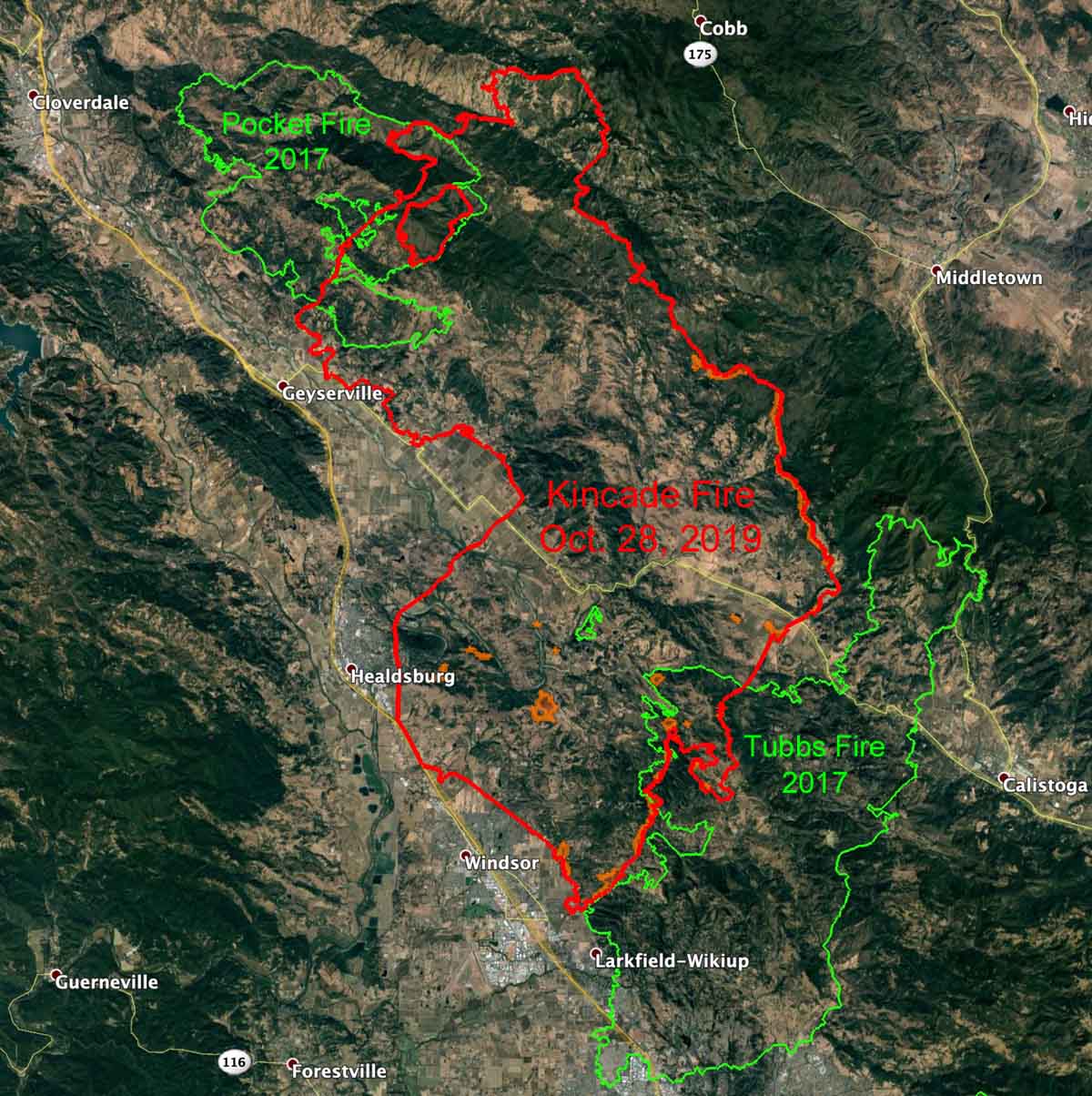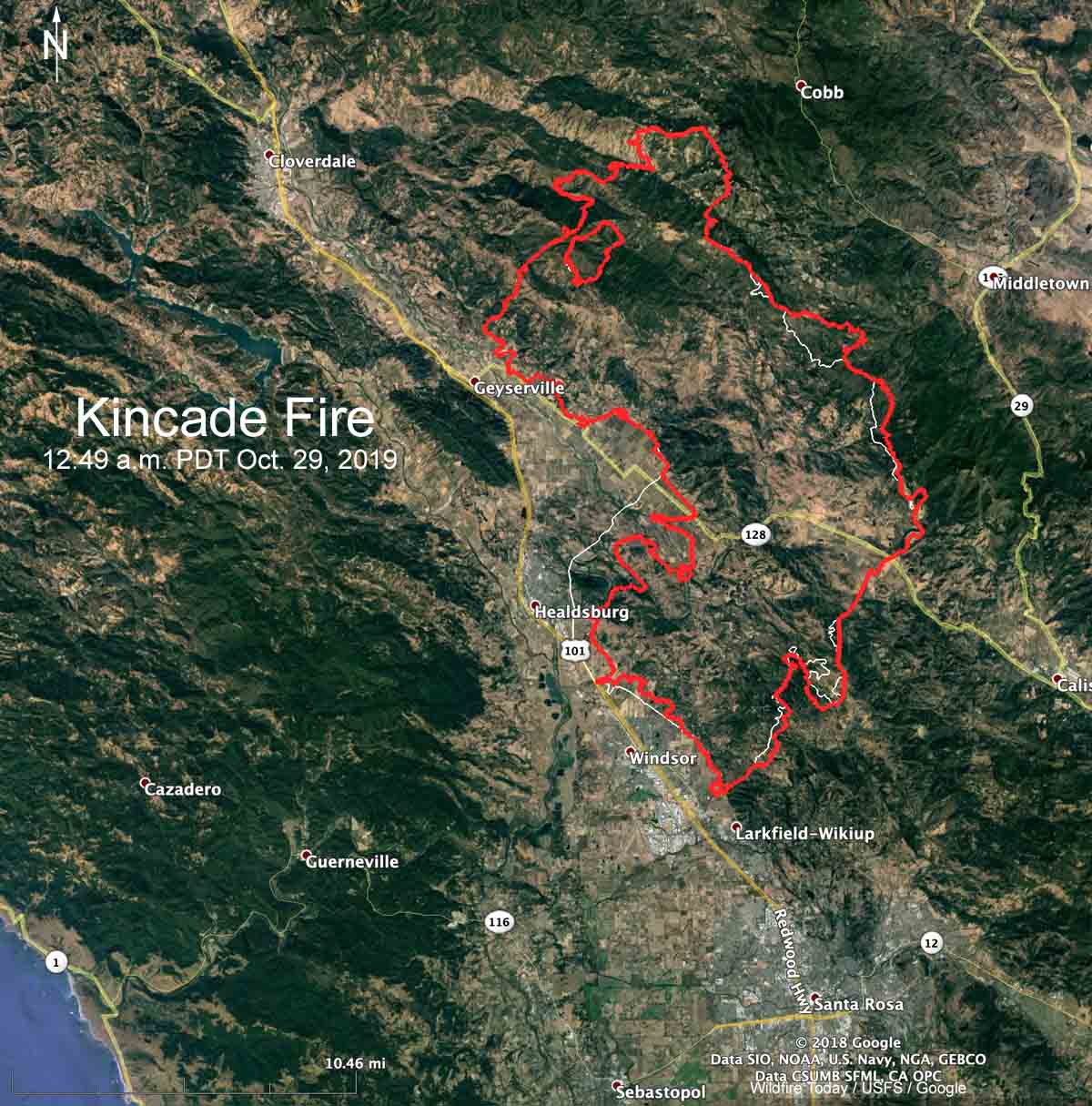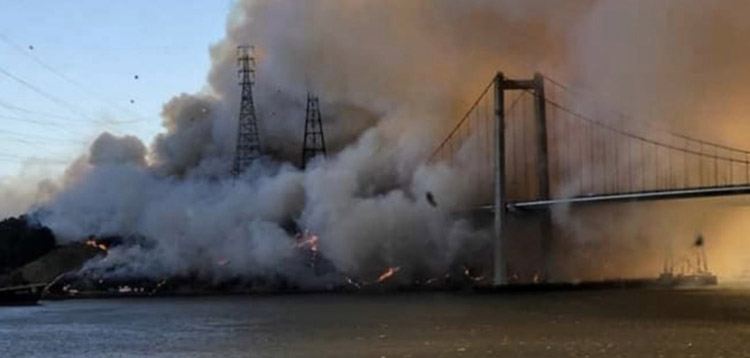
When the wind is blowing at 50 to 90 mph not much can stop a wildfire, but the footprints of two fires that burned in October of 2017, the Tubbs and Pocket Fires, may have had some limited effect on the spread of the Kincade Fire that started last week.
When a wildfire burns into a two-year-old fire scar, usually there is much less vegetation than what had been carrying the fire — fewer tons per acre and lighter fuels. For example if moving from chaparral to grass, the intensity, the amount of heat produced, and number and size of fire brands generated would be much less. That does not mean the fire would go out on it’s own, but unless the weather is extreme, like it has been in northern California off and on for the last week, there would be less resistance to control. In other words, easier to put out.
In some cases with very steep slopes or heavy fuels such as very dense brush or timber, retardant dropped from an aircraft might have little effectiveness in dry windy conditions. But in the lighter vegetation that follows a fire, aircraft can be very efficient in slowing the spread long enough to allow firefighters on the ground to move in and actually suppress it.
During the extreme weather in northern California the last few days the Kincade Fire spread partially into the Pocket Fire on the north and the Tubbs Fire on the south. On the map above take note of the unburned red polygon, or island, inside the perimeter of the Pocket Fire.
During extreme winds and single-digit humidity a fire can keep spreading until it runs completely out of fuel, but it would be interesting to hear from folks that were on the Kincade Fire to find out if there was any significant change in fire intensity when it moved into the two fire scars.









